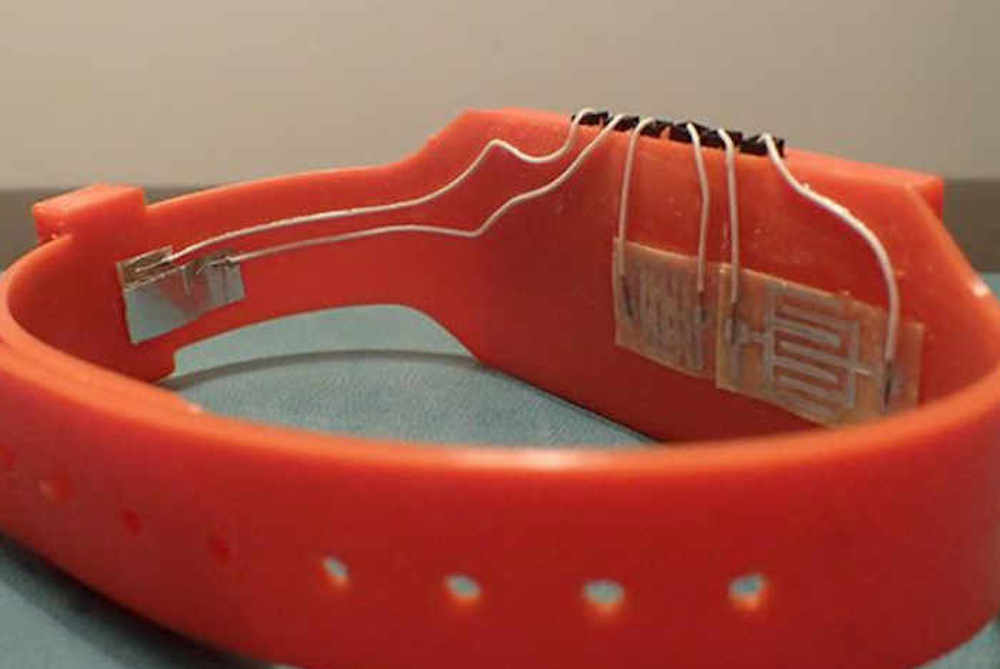Today most smartwatches serve as status symbols of sorts — they’re luxury items rather than your typical must-haves. But that might not hold true much longer, thanks to the research and development initiated by the King Abdullah University of Science and Technology (KAUST) in Saudi Arabia.
With a 3D-printed case and a cost that the research team hopes to reduce by $5 every year, the device, known as a “paper watch,” could be the disruption that smartwatches need to become a widely used technology.

KAUST's paper watch can measure body temperature, sweat levels, heart rate, and blood pressure.
The team’s watch contains flexible sensors made from household materials such as aluminum foil and sponges, with help from their silicon-based counterparts. Currently the device can measure body temperature, sweat levels, heart rate, and blood pressure. The pressure sensors in the watch were created from foil, double-sided tape, and polypropylene microfiber cleanroom wipes.
Another layer of circuitry is an RFID tag that was made by drawing on a Post-It Note with a silver ink pen and attaching a flexible radio chip. Currently there’s software being developed by the Chinese Academy of Sciences that would allow these devices to communicate with the smartphones of the future.
The device’s sensors are also tough, as they’ve survived a stress test consisting of 300 cycles of bending and unbending, and their measurement accuracy appears to be equivalent to those of more expensive smartwatches such as the Apple Watch and Samsung Gear.
Once the paper watch is developed further, the plan for its marketing will become clearer. Ironically, its main feature that’s yet to be added is actual watch functionality, or the ability to tell time.
“Of course, ‘paper watch’ is a catchphrase, but adding clock capability is easy and we are on that,” one of the electrical engineers on the team, Muhammad Mustafa Hussain, told IEEE Spectrum.
Making measurements reliable and accurate is also a top priority for Hussain and his colleagues, as they plan to spin-off a company that focuses on health monitors for the elderly population, a group that would require something more precise than the watch’s current 5% margin of error for important medical metrics, such as blood pressure.
Check out the video from KAUST below to see all the paper-thin, budget-friendly smartwatch can do for you.
Currently the prototype of the watch costs $25 to produce, and the figure is expected to keep decreasing in order to make it as affordable as possible.
Advertisement
Learn more about Electronic Products Magazine





